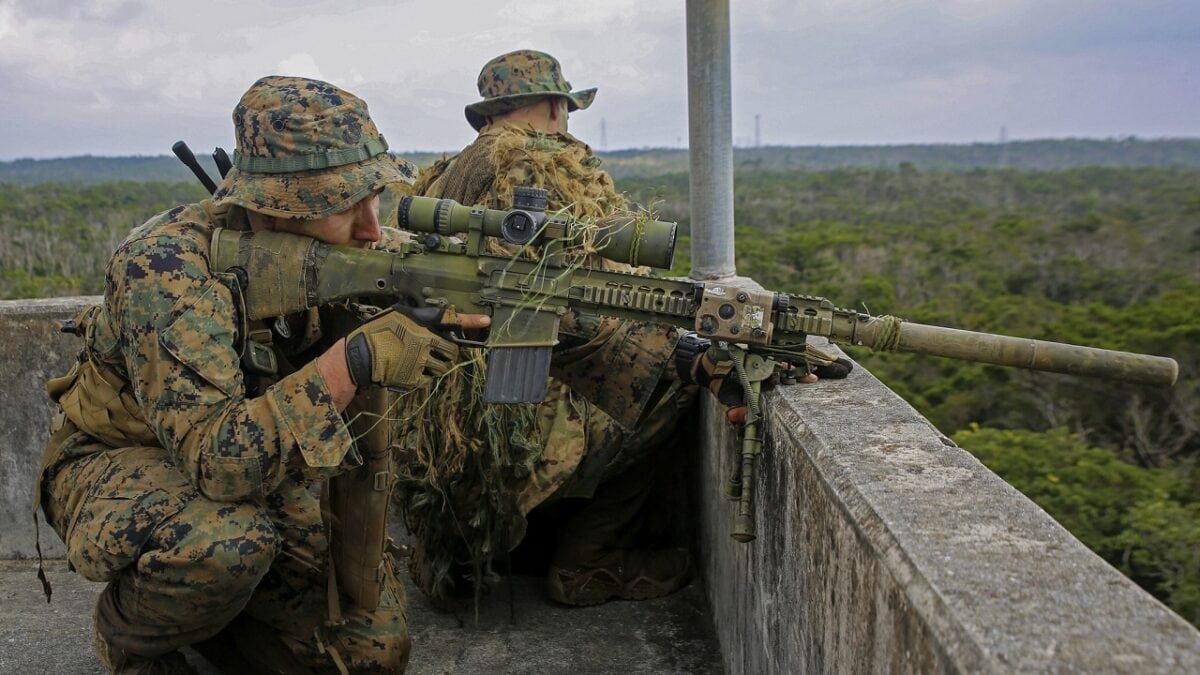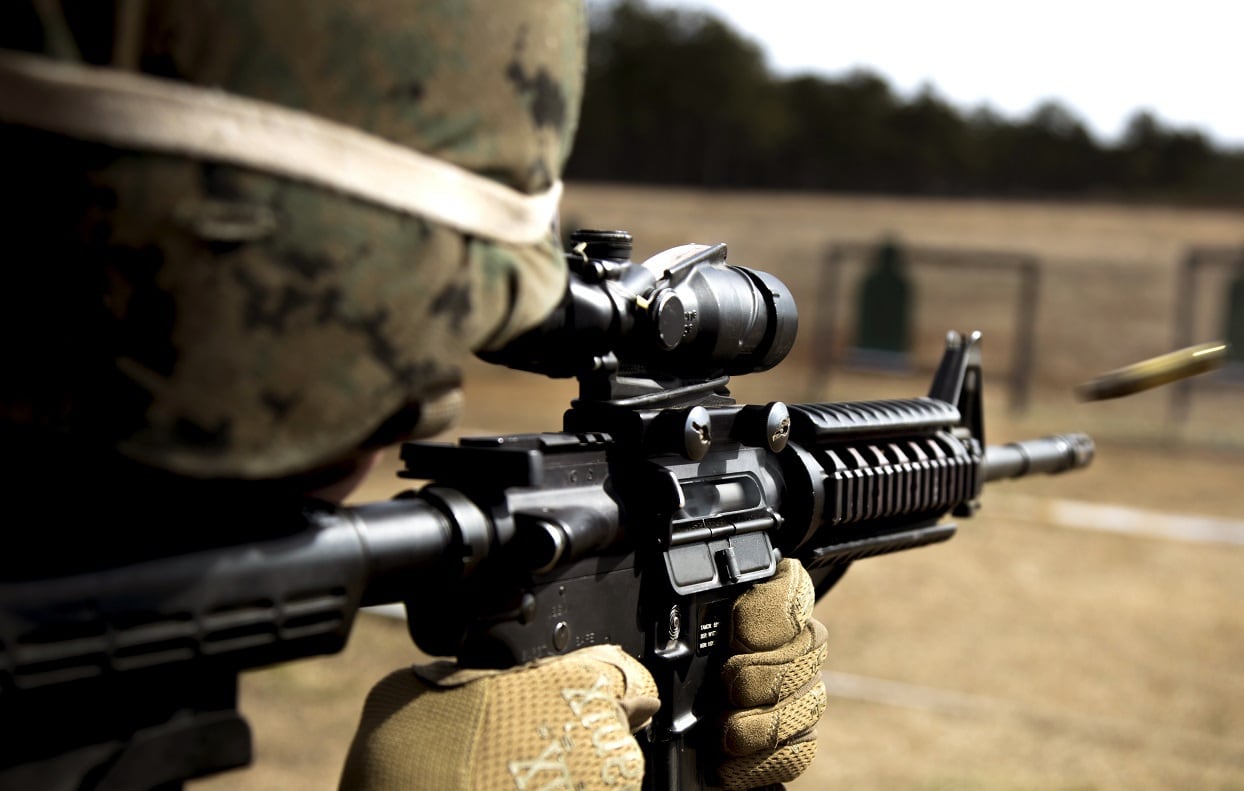The U.S. Marines are undoubtedly one of the most elite and lethal branches of the U.S. armed services – some say the most fearsome of all. But if they have no weapons to fight with or they have problems, nations like Russia and China have an advantage:
I can’t speak for the other military branches, but the Marine Corps has a weapons-cleaning problem. When I say that, I mean we clean our weapons too much. Too much, and often incorrectly, to adhere to the strict standards of the Marine Corps. The problem is complicated and tied to both the lower enlisted and the higher-ups. If the Marine Corps wants its Marines to be the most lethal warfighters, it’s a problem it needs to solve. As it’s known in the Marine Corps, weapon maintenance needs to be revised.
The problem with modern weapon maintenance
Keeping a rifle, machine gun, handgun, well, any gun, working relies on proper maintenance. Weapon maintenance is critical to the function of a weapon, especially in austere environments. We’ve fought for two decades in deserts, on snow-covered mountains, and in the worst places possible for modern weapons.
However, the extent the Marine Corps engages in weapon maintenance can be completely detrimental to the weapon. Marines find themselves using improper tools to reach a standard. For example, Marines will often use hard, stainless steel brushes to clean their weapon. When used enthusiastically, these brushes will eventually destroy the finish of the inside and outside of your weapon.
A good finish protects the weapon and helps prevent rust. Without a good finish, the weapon’s long-term reliability will be in question. My issue M9 was almost more silver than black since the finish had been rubbed off over time due to excessive cleaning.
Your average lower enlisted will likely lose or break his issued cleaning kit. This will, in turn, cause them to purchase one, which is often the cheapest one out there. These cheap cleaning kits will often have stainless steel bore brushes that can damage the rifling, making the weapon lose accuracy and consistency over time.
Marines should use bronze bore brushes mixed with bore cleaner in their weapon maintenance.
Keeping it shiny
Even Marines who keep their issued cleaning kits will find them lacking and may supplement them with tools to speed up the chore. This includes Q-tips and baby wipes. I’m guilty of this, as was every infantry Marine I knew. However, Q-tips and baby wipes come with their own problems.
Q-tips break easily and can break off or deposit little bits of cotton in areas that can disable the weapon. They can get stuck in all manner of areas in rifles, but especially in machine guns. However, Q-tips do make weapon maintenance faster, and they can reach into the spots that fingers and AP brushes can’t.
Baby wipes provided the quickest means to remove dirt, dust, and carbon. The problem with baby wipes is their low concentration of alcohol and very high concentration of water which creates rust and oxidation. In time, this gathers in small cracks and pits and eventually causes rust. Rust creates more little places for water and alcohol to gather and rust. The use of baby wipes creates a vicious cycle that will wear the weapon down sooner, creating a need for more weapon maintenance.
Finally, Marines will often turn in their weapons completely dry causing them to rust in the armory. A light coat of CLP prevents rust but can also be the reason a Marine fails inspection as CLP is slightly brown, so the weapon appears dirty when an inspector uses their finger, glove, or white patch.
Why is weapon maintenance a problem?
First, the Marine Corps culture demands perfection. If something can be cleaned, be it a humvee, a weapon, or a barracks room, it must be cleaned. This creates strict requirements for cleanliness. A weapon must be inspection-ready at all times. You never know when the commandant himself might bust into the armory and inspect the weapons.
To tap into that, lance corporals and PFCs can be lazy. Without the demand for perfection, things might be really slack. Give ’em an inch, and they’ll take ten clicks.
There is also a lack of education and clear objectives regarding weapon maintenance. You learn a little in boot camp, but it’s often sidelined in favor of drills, classes, and other training. Those cleaning methods are not retained in the feet, especially when the weapons go from rifles to machine guns, heavy machine guns, shotguns, pistols, missile launchers, and more.
How to fix it?
The Marine Corps needs to revamp and re-evaluate its weapon maintenance program, tactics, and techniques. It needs to provide modern equipment and do so in bulk. Cleaning kits are cheap, guns are not, and neither is losing a firefight due to a broken weapon.
The Marine Corps should consult with the firearms industry on the most effective means to maintain weapons. They should also ensure that the troops and command are educated on what’s important in weapon maintenance and how to achieve proper weapon maintenance. No one ever told me not to use baby wipes, steel bore brushes, or Q-tips. I learned it from higher-ups.

Sergeant Alexander M. Tryon scans the surrounding area for enemy forces during a vertical assault Dec. 10 at Combat Town. After acquiring a strong foothold within the town, the Marines cleared all of the buildings and searched for simulated high-value individuals. Tryon, from Cortland, Ohio, is a scout sniper with Weapons Company, Battalion Landing Team 2nd Battalion, 4th Marines, 31st Marine Expeditionary Unit.
Ultimately, the Marine Corps needs to accept that parade-ready weapons should be reserved for parades. Additionally, Marines need to accept responsibility for the tools of their trade and treat them as such. It’s a problem that starts at both the bottom and top of the branch and should be fixed before we worry about adopting new weapons.
Expert Biography: Travis Pike is a former Marine Machine gunner who served with 2nd Bn 2nd Marines for 5 years. He deployed in 2009 to Afghanistan and again in 2011 with the 22nd MEU(SOC) during a record-setting 11 months at sea. He’s trained with the Romanian Army, the Spanish Marines, the Emirate Marines, and the Afghan National Army. He serves as an NRA certified pistol instructor and teaches concealed carry classes. This first appeared in Sandboxx.

